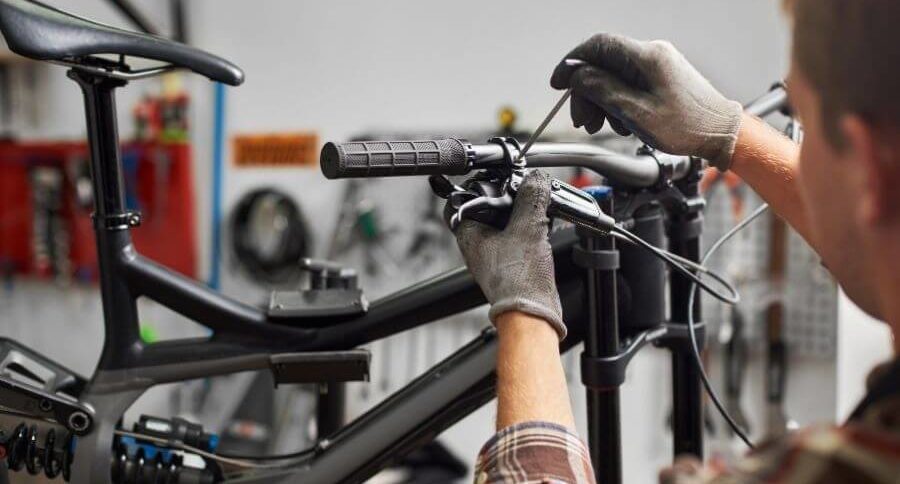Blog

Keeping the Wheels Turning: A Comprehensive Guide to Bicycle Maintenance and Brake Pads
Bicycles are not only a means of transportation but also a source of joy, exercise, and freedom. Whether you use your bike for commuting, leisurely rides, or intense training sessions, it’s essential to keep it in good working condition. One of the most critical components of your bike that deserves regular attention is the brake system, particularly the brake pads. In this comprehensive guide, we will delve into bicycle maintenance and explore the world of brake pads to ensure that your cycling experience remains safe and enjoyable.
The Importance of Bicycle Maintenance
Proper bicycle maintenance is the foundation of a safe and enjoyable cycling experience. Neglecting your bike’s upkeep can lead to various issues, including reduced performance, diminished safety, and costly repairs. Regular maintenance not only extends the lifespan of your bicycle but also enhances your ride quality.
Before we dive into brake pads, let’s briefly cover some essential aspects of bicycle maintenance that every cyclist should be familiar with:
Cleaning and Lubrication: Regularly clean your bike, paying particular attention to the drivetrain, chain, and other moving parts. Apply lubrication to keep these components running smoothly.
Tire Care: Monitor tire pressure and inspect your tires for wear and damage. Proper inflation and tire condition ensure a smooth and efficient ride.
Gears and Shifters: Keep your gear and shifter cables well-tuned for smooth gear changes. Misaligned gears can lead to poor performance and frustration on the road.
Brake System Inspection: Regularly inspect your brake system, including brake pads, cables, and levers, to ensure they are in good working order.
Now, let’s delve deeper into the crucial aspect of bicycle maintenance – brake pads.
Understanding Brake Pads
Brake pads are a fundamental component of your bike’s braking system, responsible for converting kinetic energy into thermal energy through friction, eventually bringing your bike to a stop. They play a vital role in your safety, as any issues with brake pads can lead to decreased stopping power, prolonged stopping distances, and even accidents.
Types of Brake Pads
There are several types of brake pads, each with its characteristics and ideal use cases:
Rim Brake Pads: These are designed for use with traditional rim brakes. They come in two main varieties – rubber pads for alloy rims and carbon-specific pads for carbon rims. Rim brake pads require regular inspection, as they tend to wear down over time, especially in wet conditions.
Disc Brake Pads: Disc brakes have gained popularity in recent years due to their superior stopping power and performance in various conditions. They use brake pads that clamp onto a rotor attached to the wheel hub. Disc brake pads come in different compounds – organic, semi-metallic, and metallic, each with its advantages and disadvantages.
V-Brake Pads: These are common on mountain bikes and hybrid bikes. V-brakes provide strong stopping power and require specific brake pads to work effectively.
Brake Pad Materials
Brake pads can be made from different materials, each with its characteristics:
Organic Brake Pads: These are made from a mix of natural fibers and fillers bound together by a heat-resistant resin. They offer excellent modulation and are quieter than metallic pads. However, they tend to wear out faster, particularly in wet and muddy conditions.
Semi-Metallic Brake Pads: Semi-metallic pads have metal fibers embedded in the pad material. They provide better heat dissipation and durability than organic pads, making them suitable for a wide range of conditions.
Metallic Brake Pads: These contain a high proportion of metal, which makes them highly durable and heat-resistant. Metallic pads are excellent for extreme conditions, such as downhill mountain biking, but they can be noisy and less forgiving on rims.
Maintaining and Replacing Brake Pads
Regular maintenance and replacement of brake pads are essential for your safety and the performance of your bicycle. Here are some key tips on how to maintain and replace brake pads:
Visual Inspection: Regularly inspect your brake pads for signs of wear and tear. If the pad material is less than 1-2 millimeters thick, it’s time to replace them.
Alignment: Ensure that the brake pads align properly with the rim or rotor. Misaligned pads can lead to reduced braking performance and unnecessary wear.
Cleaning: Periodically clean your brake pads with rubbing alcohol or a specific brake pad cleaner to remove dirt and debris that can compromise braking efficiency.
Pad Replacement: When replacing brake pads, always follow the manufacturer’s instructions. Pay attention to the type and material of the pads, ensuring they are compatible with your braking system.
Bedding In: After replacing brake pads, it’s essential to bed them in. This involves a series of controlled stops to transfer pad material onto the braking surface for improved performance. Consult your brake pad’s instructions for specific bedding-in procedures.
Check for Wear Patterns: Inspect your rims or rotors for wear patterns that may indicate improper alignment or uneven pad wear. Address any issues to maintain optimal braking.
Bicycle maintenance is not only a practical necessity but also an opportunity to connect with your bike, understand its intricacies, and ensure a safe and enjoyable riding experience. Among the various components of your bicycle, brake pads hold a special place due to their critical role in your safety.
Understanding the different types and materials of brake pads, as well as how to maintain and replace them, is essential for every cyclist. Regular inspections, proper alignment, and correct pad selection are key to maximizing the efficiency and lifespan of your brake pads. Remember that a well-maintained brake system ensures that you can confidently navigate any terrain while enjoying the wind in your face and the freedom of the open road. So, keep those wheels turning by taking good care of your bicycle’s brake pads, and ride on safely!
